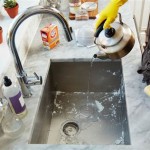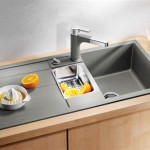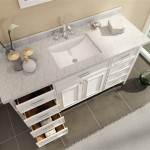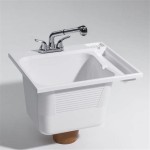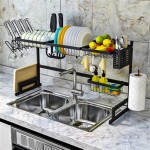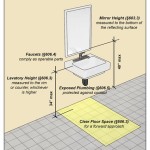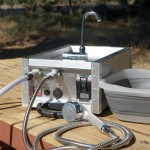Sink Inserts for Washing Dishes: A Comprehensive Guide
Sink inserts, often overlooked in the realm of kitchen accessories, play a significant role in optimizing the dishwashing process and maintaining the overall cleanliness and hygiene of a kitchen sink. These versatile tools, designed to fit within the sink basin, offer a multitude of benefits that extend beyond simply protecting the sink surface. From facilitating organized washing to providing a safer and more efficient workspace, sink inserts are a valuable addition to any kitchen. This article delves into the various types of sink inserts available, their advantages, factors to consider when choosing one, and proper maintenance techniques.
Types of Sink Inserts
The market offers a diverse range of sink inserts, each designed with specific features and functionalities to cater to different needs and preferences. The primary distinctions among these inserts lie in their material composition, structural design, and intended applications.
Sink Grids: Sink grids are typically constructed from stainless steel or coated metal. These grids sit at the bottom of the sink, elevating dishes and utensils above the sink floor. This elevation serves several purposes. It prevents scratching of the sink surface by heavy pots and pans. The grid also allows water to drain freely, preventing the pooling of dirty water and food particles around the items being washed. This improved drainage contributes to a more hygienic washing environment. Furthermore, sink grids can double as a drying rack for smaller items that need to air dry quickly.
Sink Mats: Sink mats are generally made of rubber, silicone, or plastic. Unlike grids, which have an open structure, sink mats provide a more solid surface inside the sink. Their primary function is to cushion the impact of dropped dishes, preventing breakage or chipping. Sink mats are particularly useful for protecting delicate glassware and ceramic items. The non-slip surface of these mats also helps to keep dishes in place during washing, reducing the risk of slippage and accidental damage. Some sink mats are designed with raised ridges or textured surfaces to promote better drainage and prevent items from sitting directly in standing water.
Sink Racks: Sink racks are more elaborate than simple grids or mats. They often feature multiple compartments and configurations designed to hold specific types of dishes and utensils. For instance, a sink rack might include slots for plates, compartments for silverware, and even dedicated areas for sponges and scrub brushes. These racks are particularly beneficial for organizing the dishwashing process, making it easier to locate and access items. Sink racks can be made from various materials, including stainless steel, plastic, and coated wire. They often come with adjustable components to accommodate different sink sizes and shapes.
Sink Baskets: Sink baskets are small, typically square or rectangular containers that fit into the corner of a sink. Their main purpose is to collect food scraps and debris during the dishwashing process. By preventing food particles from entering the drain, sink baskets help to prevent clogs and maintain the proper functioning of the plumbing system. These baskets are usually made of plastic or stainless steel and feature drainage holes to allow water to pass through while trapping solid waste. Regular emptying and cleaning of sink baskets are essential to prevent the buildup of bacteria and unpleasant odors.
Benefits of Using Sink Inserts
Incorporating sink inserts into the dishwashing routine provides a multitude of advantages, contributing to a more efficient, hygienic, and damage-free kitchen environment. These benefits extend beyond mere aesthetics, impacting both the longevity of the sink and the ease of the dishwashing process.
Protection Against Scratches and Damage: One of the most significant benefits of using sink inserts is the protection they provide against scratches and damage to the sink basin. Heavy pots, pans, and sharp utensils can easily scratch the surface of the sink, especially if it is made of stainless steel or enamel. Sink grids and mats create a buffer between these items and the sink surface, preventing direct contact and minimizing the risk of scratches and dents. This protection helps to maintain the aesthetic appeal of the sink and prolong its lifespan. For sinks made of more delicate materials, such as porcelain, the cushioning effect of sink mats is particularly crucial in preventing chips and cracks.
Improved Drainage and Hygiene: Sink inserts, particularly grids and mats with raised designs, facilitate better drainage by elevating dishes and utensils above the sink floor. This elevation prevents items from sitting in standing water, which can harbor bacteria and create a breeding ground for germs. Improved drainage also allows food particles and soap residue to be flushed away more effectively, contributing to a cleaner and more hygienic washing environment. The open structure of sink grids allows water to circulate freely, preventing the accumulation of debris and minimizing the risk of unpleasant odors. Regular cleaning of the sink insert itself is still necessary to maintain optimal hygiene.
Enhanced Organization and Efficiency: Sink racks and baskets contribute to improved organization and efficiency during the dishwashing process. Sink racks provide dedicated spaces for different types of dishes and utensils, making it easier to locate and access items. This structured approach streamlines the washing process and reduces the likelihood of items being misplaced or damaged. Sink baskets, by collecting food scraps and debris, prevent the drain from becoming clogged, saving time and effort on plumbing repairs. The organized layout created by sink inserts also helps to maximize the available workspace around the sink, making the dishwashing process more comfortable and efficient.
Noise Reduction: The use of sink inserts, especially mats made of rubber or silicone, can significantly reduce noise levels during dishwashing. The cushioning effect of these materials absorbs the impact of dropped dishes and utensils, minimizing the clanging and clattering sounds that can be disruptive, particularly in open-plan kitchens. This noise reduction contributes to a more peaceful and pleasant kitchen environment, making the dishwashing process less of a chore.
Factors to Consider When Choosing a Sink Insert
Selecting the appropriate sink insert requires careful consideration of several factors, including the sink's dimensions, the user's specific needs, and the material properties of the insert. A well-chosen sink insert should fit properly within the sink basin, provide adequate protection, and meet the user's specific organizational and hygiene requirements.
Sink Size and Shape: The most crucial factor to consider is the size and shape of the sink. Sink inserts are available in a variety of sizes and shapes, so it is essential to choose one that fits snugly within the sink basin without obstructing the drain or interfering with the faucet. Measuring the dimensions of the sink before purchasing an insert is highly recommended. For irregularly shaped sinks, flexible or adjustable inserts may be the best option. Universal sink mats can often be trimmed to fit specific sink contours.
Material: The material of the sink insert is another important consideration. Stainless steel is durable, rust-resistant, and easy to clean, making it a popular choice for sink grids and racks. Rubber and silicone are flexible, non-slip, and provide excellent cushioning, making them ideal for sink mats. Plastic is lightweight and inexpensive but may not be as durable as other materials. The choice of material should depend on the user's specific needs and preferences. For example, if noise reduction is a primary concern, a rubber or silicone mat would be the most suitable option.
Functionality: The intended function of the sink insert should also be taken into account. If the primary goal is to protect the sink from scratches and damage, a sink grid or mat would be the best choice. If organization and efficiency are more important, a sink rack with dedicated compartments for dishes and utensils would be more appropriate. For those concerned about drain clogs, a sink basket would be a valuable addition. It is important to identify the user's specific needs and choose an insert that addresses those needs effectively.
Maintenance: The ease of maintenance is another factor to consider. Sink inserts should be easy to clean and resistant to staining and odor buildup. Stainless steel and silicone are generally easy to clean and maintain, while rubber and plastic may require more frequent cleaning. It is important to choose an insert that can be easily cleaned and sanitized to prevent the growth of bacteria and maintain a hygienic washing environment. Some sink inserts are dishwasher-safe, which can simplify the cleaning process.
Durability: The durability of the sink insert is important for long-term use. A well-made sink insert should be able to withstand the rigors of daily use without breaking or deteriorating. Stainless steel and high-quality rubber and silicone are typically more durable than plastic. Investing in a durable sink insert will ensure that it lasts for many years, providing ongoing protection and convenience.
Proper Maintenance and Cleaning
Regular maintenance and cleaning are essential to ensure the longevity and hygiene of sink inserts. Proper care will prevent the buildup of bacteria, food debris, and soap scum, maintaining a clean and sanitary dishwashing environment.
Regular Cleaning: Sink inserts should be cleaned regularly, ideally after each use or at least once a day. This can be done by rinsing the insert with warm water and soap. For more thorough cleaning, a scrub brush or sponge can be used to remove stubborn stains and debris. It is important to pay particular attention to areas where food particles tend to accumulate, such as the corners of sink baskets and the crevices of sink grids.
Disinfection: To prevent the growth of bacteria and mold, sink inserts should be disinfected periodically. This can be done by soaking the insert in a solution of diluted bleach or vinegar. For a bleach solution, mix one tablespoon of bleach with one gallon of water. For a vinegar solution, mix equal parts of white vinegar and water. Soak the insert in the solution for 15-20 minutes, then rinse thoroughly with water. Always wear gloves when handling bleach solutions to protect the skin.
Dishwasher Cleaning: Many sink inserts, particularly those made of stainless steel or silicone, are dishwasher-safe. This provides a convenient and efficient way to clean and sanitize the insert. Simply place the insert in the dishwasher and run it through a normal wash cycle. Check the manufacturer's instructions to ensure that the insert is indeed dishwasher-safe.
Preventing Staining: To prevent staining, avoid leaving coffee grounds, tea bags, or other staining substances in contact with the sink insert for extended periods. Rinse the insert immediately after use to remove any potential staining agents. For stubborn stains, a paste made of baking soda and water can be applied to the affected area and scrubbed gently.
Drying: After cleaning, ensure that the sink insert is thoroughly dried before placing it back in the sink. This will help to prevent the growth of mold and mildew. Use a clean towel to dry the insert, or allow it to air dry completely. Pay particular attention to drying the underside of the insert, as this area is prone to moisture buildup.

Countertop Accessories Organise Your Kitchen Sink Brabantia

Over The Sink Premium Quality Adjustable Dish Rack With 6 Accessories

6 Best Dish Drying Racks 2025 Reviewed Food Network

Countertop Accessories Organise Your Kitchen Sink Brabantia

Kitchen Double Over Sink Storage Single Layer Dish Holders Racks Stainless Steel

Kruvad Stainless Steel Fold Able Roll Up Kitchen Sink Crockery Vegetable Wash Utensils Drain Rack Dish Drying At Best S In India Jio

Kitchen Sink Shelving Countertops Multi Layer Drying Draining Rack Corner Cabinets Washing Dishes Above The

Food 52 S Drying Rack Is The Only One I Ll Ever Use

Stainless Steel Adjustable Telescopic Kitchen Insert Storage Organizer Over Sink Dish Drying Rack Vegetable Tray Drain A Daraz Pk

The 10 Best Over Sink Dish Racks To Save Counter Space 2025
